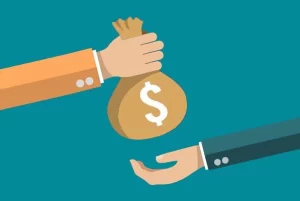![]()

Introduction
Taxpayers often wonder what an income tax refund is and why they receive it. When individuals or businesses overpay their taxes throughout the year, either through payroll deductions or estimated tax payments, they are eligible for a refund from the government. An income tax refund is essentially a reimbursement of excess tax paid. Understanding how tax refunds work can help taxpayers make better financial decisions and optimize their tax planning.
Definition
An income tax refund is a payment issued by the government to a taxpayer who has paid more tax than what was owed for a given fiscal year. It occurs when the total tax liability is lower than the amount already paid through withholding or estimated payments.
Application
A tax refund is applied when:
- Employers withhold too much tax from a paycheck.
- Estimated tax payments exceed actual liability.
- Tax credits and deductions lower taxable income below pre-paid tax amounts.
- Filing status, exemptions, or deductions reduce total owed tax.
To receive a refund, taxpayers must file a tax return, typically using forms like the IRS Form 1040 in the U.S. or respective tax return forms in other countries.
Benefits of an Income Tax Refund
1. Financial Relief
Tax refunds provide a lump sum of money, which can help with savings, investments, or paying off debts.
2. Encourages Savings and Investments
Many taxpayers use refunds to build emergency funds, invest in stocks, or contribute to retirement accounts.
3. Debt Repayment
A refund allows individuals to pay off credit card debts, student loans, or other outstanding financial obligations.
4. Economic Stimulus
Government-issued refunds increase consumer spending, which can boost economic growth.
5. Education and Home Improvement
Some taxpayers use their refunds for educational expenses, home renovations, or other personal development investments.
Usage of Tax Refunds
1. Emergency Funds
Setting aside a portion of a refund in a savings account can provide financial security.
2. Investing
Refunds can be used for stock market investments, real estate, or retirement funds.
3. Major Purchases
Many taxpayers utilize refunds to buy vehicles, home appliances, or fund vacations.
4. Charitable Contributions
Some use refunds to support charitable organizations and benefit from additional tax deductions in the future.
5. Business Investments
Entrepreneurs can use refunds to start a business or expand an existing one.
Limitations of an Income Tax Refund
1. No Interest Earned
Refunds are essentially an interest-free loan to the government. Instead, taxpayers could adjust withholdings to keep more money throughout the year.
2. Processing Delays
Refunds can take weeks or even months, depending on tax filing errors, fraud investigations, or backlog processing.
3. Errors and Adjustments
Mistakes in tax filings may result in lower refunds or additional tax liabilities.
4. Not a Guaranteed Benefit
Some taxpayers may not receive a refund if they have underpaid taxes or if changes in tax laws affect eligibility.
5. Potential Scams
Fraudsters often target taxpayers with fake refund schemes. It is essential to use official tax filing platforms and avoid sharing sensitive information.
Cooperative Table: Tax Refund at a Glance
| Aspect | Explanation |
|---|---|
| Definition | Refund of overpaid taxes |
| Eligibility | Overpaid taxes, deductions, and credits |
| Application | Filing tax returns with accurate information |
| Benefits | Financial relief, savings, debt repayment |
| Usage | Investments, emergency funds, purchases |
| Limitations | No interest, delays, potential errors |
| Processing Time | Typically 2-8 weeks |
| Scams | Beware of fraud and phishing attempts |
| Forms Used | IRS 1040 (US), other national tax forms |
| Alternatives | Adjust withholdings to minimize overpayment |
Conclusion
An income tax refund can be a financial boon for many individuals, but it is important to view it strategically. Instead of seeing it as extra money, taxpayers should consider adjusting their withholdings to receive higher paychecks throughout the year. Proper financial planning ensures that refunds are used wisely, benefiting long-term financial stability and growth.
10 FAQs about Income Tax Refunds
1. How long does it take to receive a tax refund?
Typically, refunds take 2-8 weeks, depending on the country and filing method.
2. Can I check the status of my refund?
Yes, most tax agencies provide online tools for tracking refund status.
3. Why is my refund smaller than expected?
Deductions, tax liabilities, or errors may reduce refund amounts.
4. Can I receive a refund if I have unpaid debts?
Government agencies may offset refunds for unpaid taxes, loans, or child support.
5. Are tax refunds taxable?
No, refunds are not considered taxable income since they are overpaid taxes.
6. How can I maximize my tax refund?
By claiming eligible deductions, credits, and contributing to tax-advantaged accounts.
7. What happens if I don’t file my taxes?
Failure to file may result in penalties, interest charges, and loss of refund eligibility.
8. Can I get a refund if I’m self-employed?
Yes, self-employed individuals can receive refunds if they overpay estimated taxes.
9. What should I do if my refund is delayed?
Check status online, ensure accurate information, and contact tax authorities if necessary.
10. How can I prevent tax refund fraud?
File early, use secure platforms, and avoid sharing personal details with unverified sources.
An income tax refund is a valuable financial tool when managed correctly. Understanding its benefits, applications, and limitations enables taxpayers to make informed financial decisions.
To visit- https://www.incometax.gov.in

For further details access our website https://vibrantfinserv.com/
To visit: https://www.mca.gov.in/
Contact: 8130555124, 8130045124
Whatsapp: https://wa.me/918130555124
Mail ID: operations@vibrantfinserv.com
Web Link: https://vibrantfinserv.com
FB Link: https://fb.me/vibrantfinserv
Insta Link: https://www.instagram.com/vibrantfinserv2/